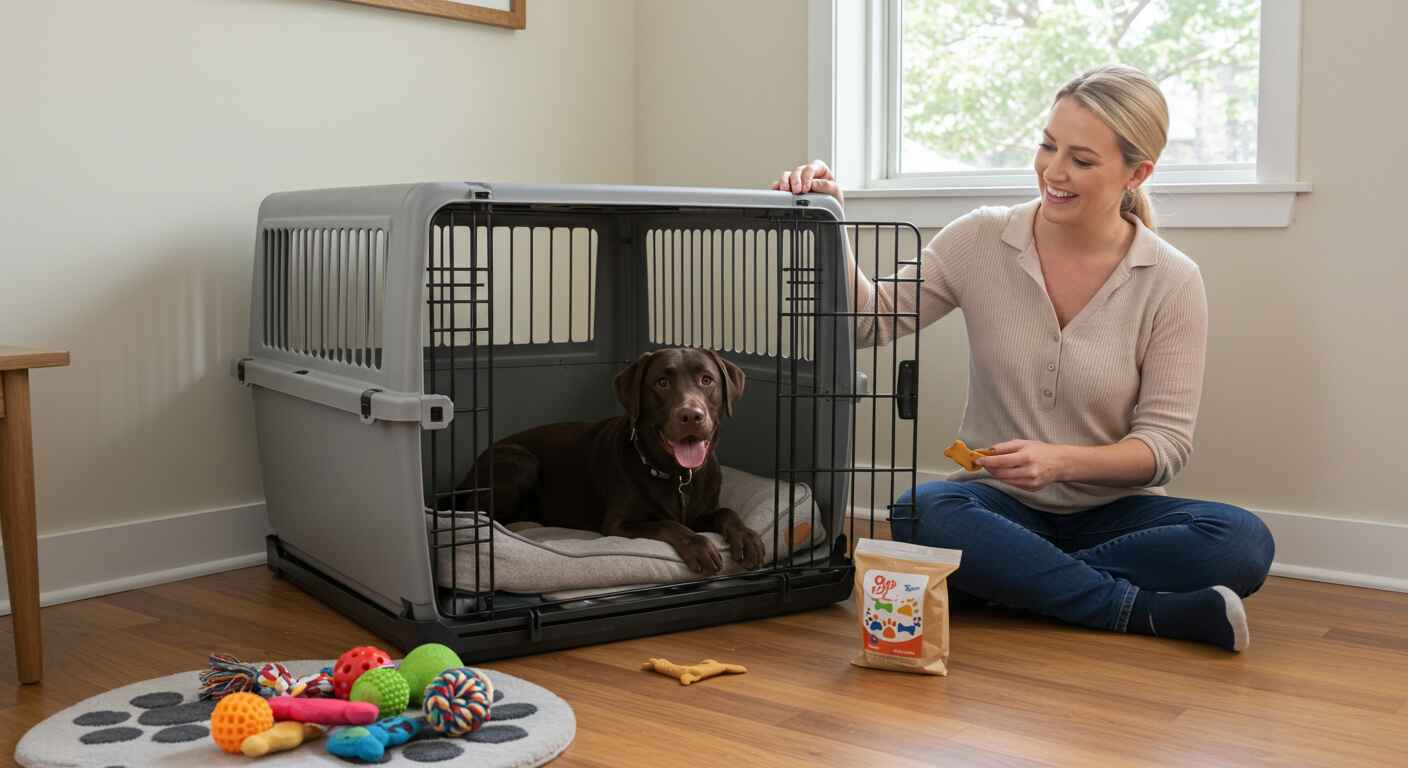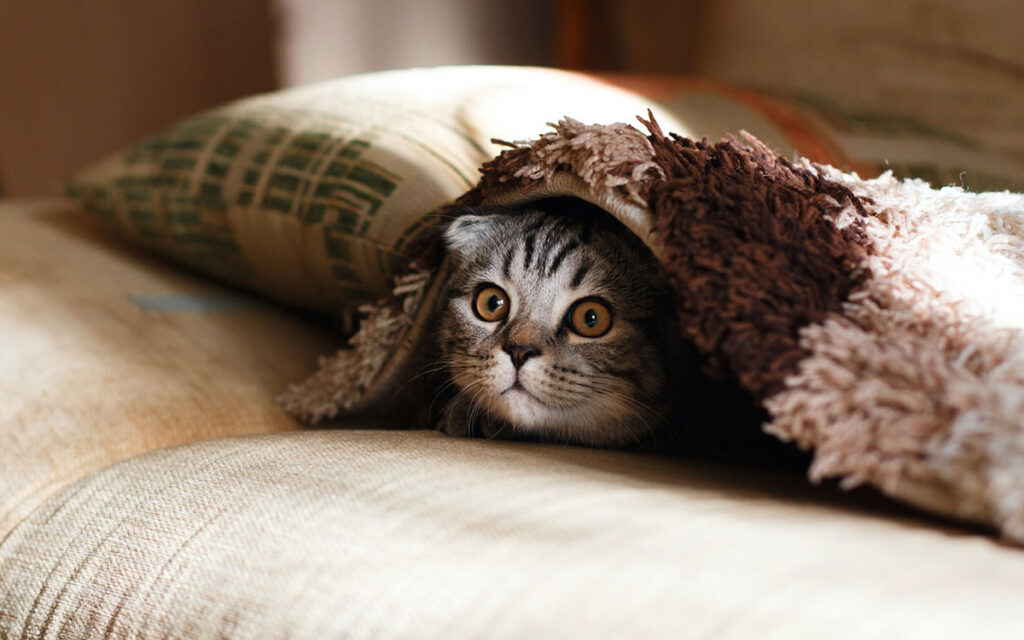How to crate train a puppy without tears starts with understanding your pup’s needs, just like I learned with Max, our loyal Labrador. His first night’s whimpers echoed my childhood home’s furry chaos, dogs, cats, and our parrot, Charlie, always stealing the show.
Using my family’s pet-raising wisdom, I helped Max love his crate without tears. Now, he naps happily, and I’m sharing seven proven steps to crate train your puppy without tears. With expert tips and our pet-loving family’s methods, plus a free crate training schedule, you’ll create a tear-free crate experience!
Table of Contents
Why Puppies Cry in Crates
Before diving into how to crate train a puppy without tears, let’s explore why puppies cry in crates. Puppies are tiny explorers in a big world, and crates can feel strange. Common reasons include:
- Loneliness: Puppies miss their littermates or you.
- Fear: A new crate seems like an unfamiliar cage.
- Potty Needs: Young pups can’t hold it long.
- Attention-Seeking: Some learn crying gets attention.
Luna, our shy tabby, meowed softly her first night in a crate during a vet stay. A familiar blanket helped her settle. Puppies are similar, crates tap into den instincts, but new surroundings trigger stress. Understanding these triggers is key to tear-free crate training. Let’s set up a cozy crate.
Setting Up the Perfect Crate
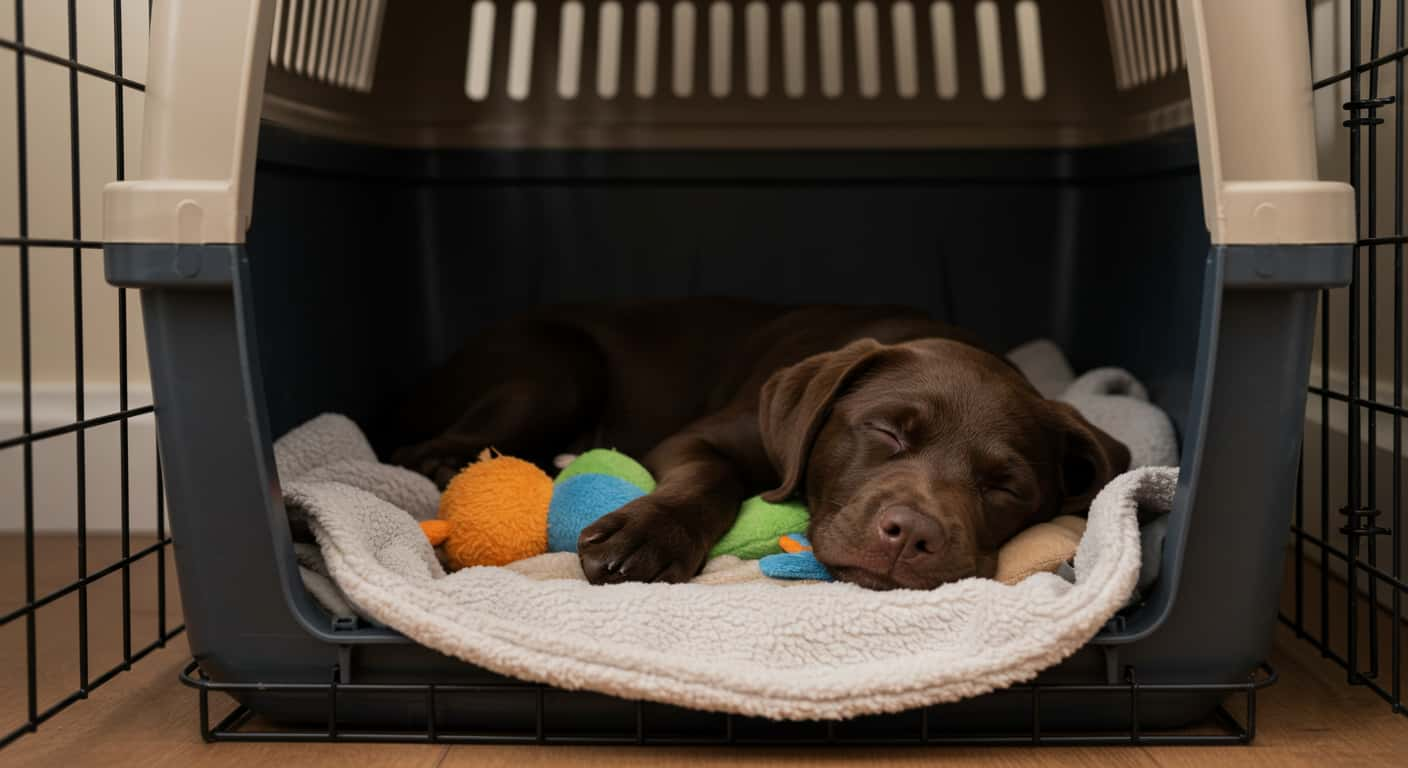
A cozy crate is the foundation for how to crate train a puppy without tears. Here’s how to make it a puppy paradise:
- Choose the Right Crate: Opt for a well-ventilated wire crate like the Midwest iCrate, sturdy and adjustable for growth.
- Size It Right: Ensure the crate allows standing, turning, and lying down. Use a divider for growing pups to prevent accidents.
- Make It Cozy: Add soft bedding, a durable toy, and a familiar-smelling item, like your old T-shirt.
- Create a Den: Cover three sides with a breathable crate cover to mimic a den, reducing overstimulation.
Setting up Max’s crate reminded me of designing a cozy cage for Peanut and Butter, our guinea pigs. Their squeaky excitement inspired Max’s soft blanket and chew toy. Pro tip: Skip plush dog beds if your puppy chews Max shredded one in a week! With the crate ready, let’s dive into the steps.
What to Put in a Puppy Crate for Comfort and Safety
To successfully crate train a puppy without tears, it’s not just about the method—it’s about the environment. What you place inside the crate can make the difference between a pup who cries and one who feels calm and secure.
Here’s exactly what to put in a puppy crate:
- 🐾 Soft, washable bedding
Choose bedding that’s cozy but safe for chewing. Avoid overly fluffy materials with loose threads. Look for a waterproof liner underneath for easy cleaning. - 🦴 A safe chew toy or teething aid
Puppies love to chew, especially when nervous. A frozen Kong filled with peanut butter or wet food can redirect anxiety and encourage quiet time. - 💧 A crate-mounted water bowl
Hydration is key, especially for longer naps. Use a spill-proof bowl that attaches securely to the crate bars. - 🧺 A familiar-smelling item
Include a t-shirt you’ve worn or a small blanket that smells like home. This gives comfort and mimics your presence when you’re away. - 🌙 Optional: a crate cover or blanket
Covering the crate (partially) can block distractions and help your puppy relax, especially at night or during naps.
Creating this positive, cozy space reinforces trust and helps crate train a puppy without tears by reducing sensory stress. The more comforting the environment, the easier the transition becomes.
7 Proven Steps to Crate Train a Puppy Without Tears
Follow these seven proven steps to master how to crate train a puppy without tears, transforming the crate into their favorite spot.
Introduce the Crate Gradually
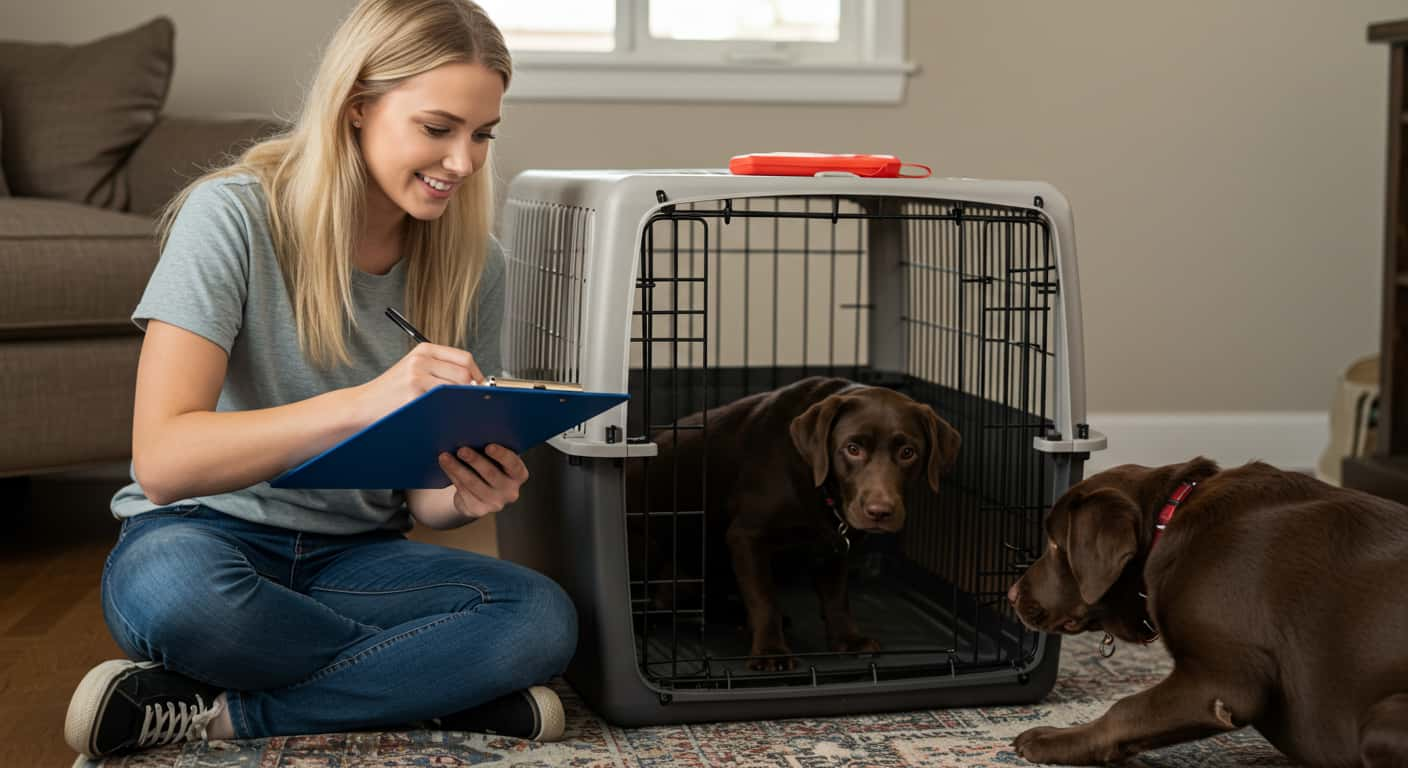
Make the crate inviting without closing the door. Place treats or a toy near the entrance, then inside, letting your puppy explore. My grandmother’s patience with Mimi’s slow trust taught me this. Max sniffed treats near his crate, wagging like he’d found treasure. Spend a few days praising every curious step.
Feed Meals in the Crate
Move your puppy’s food bowl just inside the crate to build positive associations. Over days, slide it deeper until they’re eating fully inside. Luna purred through crate meals during her vet stay, her shyness fading. This links the crate to something your puppy loves, food! Keep the door open to avoid stress.
Close the Door Briefly
Once comfortable eating inside, close the door during meals, opening it before they finish or whine. Stay nearby, offering calm praise. For sensitive pups, a white noise machine helps Max loved it during thunderstorms. Gradually extend door-closed time by a minute or two daily.
Extend Crate Time
When relaxed with the door closed, encourage short stays after meals or playtime. Toss a treat inside, say “crate,” and close the door for 10 minutes while home. Max napped in his crate after fetch, like my childhood dogs in their beds. Slowly build to 30 minutes, staying nearby.
Soothe Nighttime Crying
Nighttime is tough, puppies crave closeness. Place the crate in your bedroom. Add a heartbeat toy or ThunderEase pheromone diffuser. If crying persists, check after 10 minutes for potty needs, but avoid rewarding whines. Download our Nighttime Crate Soothing Checklist for tips. Max slept better with my sweatshirt, inspired by Luna’s love for familiar scents.
Leave for Short Periods
Start leaving briefly, like stepping out for coffee. Use a pet camera to monitor. Begin with 5-minute absences, returning before crying. Charlie, our parrot, taught me patience, small steps lead to wins. Gradually increase to an hour, ensuring your puppy is calm.
Maintain a Schedule
Consistency is key to how to crate train a puppy without tears. Set regular meal, potty, and crate times. Max thrived on a schedule, like my family’s Sunday pet gatherings brought order to chaos. Grab our free printable crate training schedule to stay organized. Stick to this, and the crate becomes a safe, happy place.
Include a Crate Training Schedule
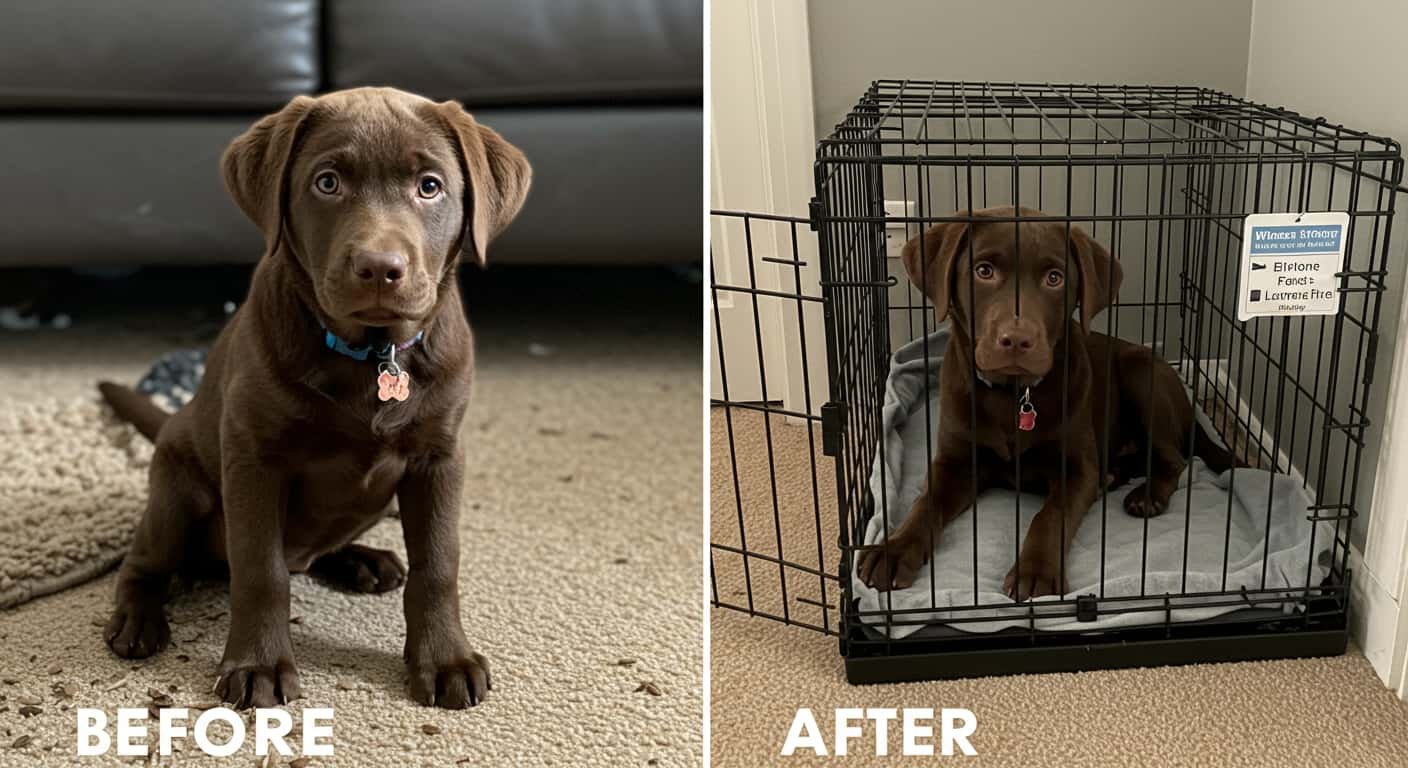
Here’s the truth: puppies thrive on predictability. The more consistent you are, the faster they’ll feel safe and learn what’s expected. A simple schedule will help you crate train a puppy without tears, just patience, love, and a little planning.
“Think of your puppy’s crate schedule like baby nap time, it’s all about building trust through routine.”
For Puppies Under 12 Weeks
| Time | What to Do |
|---|---|
| 7:00 AM | Out of crate, potty time , breakfast, short play |
| 8:30 AM | Crate time for a nap (1-2 hours) |
| 10:30 AM | Potty break + short training/play session |
| 12:00 PM | Lunch + crate nap |
| 3:00 PM | Playtime, training, potty, cuddles |
| 4:30 PM | Back in crate for another short nap |
| 6:00 PM | Dinner + evening wind-down |
| 8:00 PM | Last crate nap (short) or quiet play outside crate |
| 10:00 PM | Potty time + crate for bedtime |
| Overnight | Expect 1-2 potty wakeups |
Staying consistent with your schedule builds trust. Over time, your puppy learns when to expect meals, potty breaks, and naps, making it easier to crate train a puppy without tears. Even five extra minutes of play before crate time can help your puppy settle in more calmly and build positive associations that last a lifetime.
For Puppies Over 3 Months
- Stretch crate sessions gradually: 2-3 hours max during the day
- Nighttime crate use can go up to 5-6 hours at first, then 7-8
- More mental stimulation = better crate success
“By keeping our puppy on a daily crate training schedule, accidents disappeared in just two weeks!” Happy Dog Parent
Important: Don’t Overuse the Crate
Crates are magical, but they’re not a babysitter. Puppies need exercise, bonding time, and enrichment. If you leave them crated too long, you’ll undo all your hard work.
👉 Golden rule: One hour per month of age, up to four hours max at a time during the day.
Mini Recap
- Set a consistent daily schedule
- Prioritize potty breaks
- Use the crate for short naps and overnight sleep
- Give tons of praise, love, and play outside the crate
With love, structure, and the right timing, you can crate train a puppy without the guilt or guilt trips.
Troubleshooting Issues When You Crate Train a Puppy Without Tears
Even with a solid plan, hiccups happen. Here’s how to handle common issues when you crate train a puppy without tears:
Persistent Crying
Ignore brief whining to avoid reinforcing it. After 10-15 minutes, check for potty needs or distress. Max’s whimpers once lasted 20 minutes, but a potty break solved it.
Accidents in Crate
Ensure the crate isn’t too big, and stick to frequent potty breaks (every 2 hours for young pups). Max had one accident, but tightening his schedule fixed it.
Severe Anxiety
If crying doesn’t improve after a week, consult a veterinary behaviorist. Luna’s vet helped tweak her crate setup for stress-free stays.
Our family’s teamwork, honed by pet chaos, taught me persistence. You’ve got this!
Understanding Puppy Behavior During Crate Training
If you want to crate train a puppy without tears, understanding your puppy’s mindset is just as important as using the right techniques. Crate training can feel overwhelming for a young dog, especially during their first few weeks at home. This section helps you tune into your puppy’s emotions so you can crate train a puppy without tears and frustration.
Why Puppies Cry in Crates
Many new pet parents are surprised when their puppy cries, whines, or barks once crated. This behavior doesn’t mean you’re failing—it’s a normal reaction. Puppies cry because they miss their littermates, feel anxious, or simply aren’t used to being alone. If you push too fast, it becomes difficult to crate train a puppy without tears.
The Role of Positive Association
One of the most effective ways to crate train a puppy without tears is through positive association. The crate should feel like a safe den—not a punishment. Feed your puppy inside the crate, place their favorite toy or chew inside, and reward calm behavior with treats or praise.
Consistency and patience help your puppy feel secure. Over time, the crate becomes a familiar space, not a scary one.
Signs of Stress vs. Normal Adjustment
To crate train a puppy without tears, you need to recognize the difference between mild adjustment and serious stress. Some whining is normal, especially early on. But if your puppy shows signs like excessive drooling, biting the crate, or refusing food, take a step back.
In these cases, shorten crate time and increase positive exposure while staying close by. If your goal is to crate train a puppy without tears, slow, reassuring steps make a big difference.
Enrichment Makes Crate Time Easier
Mental stimulation is often overlooked but essential when you crate train a puppy without tears. A bored puppy is more likely to protest or become anxious.
Try:
- Frozen treat-filled toys
- Puzzle feeders
- Calming music
- Short training games involving entering and exiting the crate
These simple tools make crate time more enjoyable and productive.
Your Mindset Matters Too
Believe it or not, your energy plays a role. Puppies pick up on your mood. If you’re anxious, your puppy will be too. Staying calm, speaking softly, and creating a predictable crate routine helps crate train a puppy without tears and builds long-term trust.
When to Seek Help
If your puppy continues to resist despite your efforts, or if crate training leads to destructive behavior or panic, consult a trainer or veterinarian. Not all puppies respond the same way, and in rare cases, a more specialized approach is needed to crate train a puppy without tears.
By truly understanding your puppy’s emotional world, you can crate train a puppy without tears and build a loving bond that lasts for life.
Long-Term Benefits of Crate Training
Crate training sets puppies up for life. It aids potty training, prevents chewing chaos, and eases travel or vet visits. Max’s crate training made a vet stay a breeze, like Mimi’s calm in her carrier as a senior cat. Crates also provide safety during emergencies, like evacuations. With patience, your puppy’s crate becomes their lifelong sanctuary.
Frequently Asked Questions About How to Crate Train a Puppy Without Tears
How long does it take to crate train a puppy without tears?
It typically takes 1-4 weeks to crate train a puppy without tears, depending on their age and temperament. Max settled in two weeks with consistent steps, like feeding in the crate. Puppies under 12 weeks may need more time due to shorter attention spans. Stick to the seven steps and adjust based on your pup’s comfort.
Can I crate train a puppy without tears at night only?
Yes, but daytime training helps. Start with nighttime by placing the crate in your bedroom, as we did with Max, and use a heartbeat toy. Gradually introduce daytime sessions to build positive associations. This ensures your puppy sees the crate as a safe space around the clock.
What if my puppy hates the crate despite training?
If your puppy resists, revisit gradual introduction. Luna hated her crate until we added a familiar blanket. Try high-value treats or a Kong toy with peanut butter. If distress persists, consult a behaviorist—our vet helped Luna. Patience is key to crate training a puppy without tears.
How do I stop my puppy from chewing crate bedding?
Puppies like Max chew when bored or teething. Use durable bedding and remove plush beds, Max destroyed one! Offer a chew toy instead. Supervise early on, and if chewing persists, shorten crate time and increase play. This keeps crate training tear-free.
Should I use a crate cover to crate train a puppy without tears?
A crate cover can create a den-like feel, calming puppies. We covered three sides of Max’s crate, mimicking Peanut and Butter’s cozy cage. Ensure breathability and avoid full coverage if your puppy seems anxious. Test what works for tear-free training.
Let’s Make Crate Training a Joy
Mastering how to crate train a puppy without tears is possible with these seven proven steps, a cozy setup, and patience. Max and Luna’s journey from whimpers to cozy naps proves it, and our pet-loving family is cheering you on. Download our free crate training schedule and Nighttime Soothing Checklist to simplify the process.
This site is about community, so share your crate training story below! Did your puppy take to their crate like Max, or were they a drama queen like Luna? Explore tips on puppy potty training or choosing the best puppy toys, and let’s raise happy pets together. Thanks for joining our pet family, don’t be a stranger!

